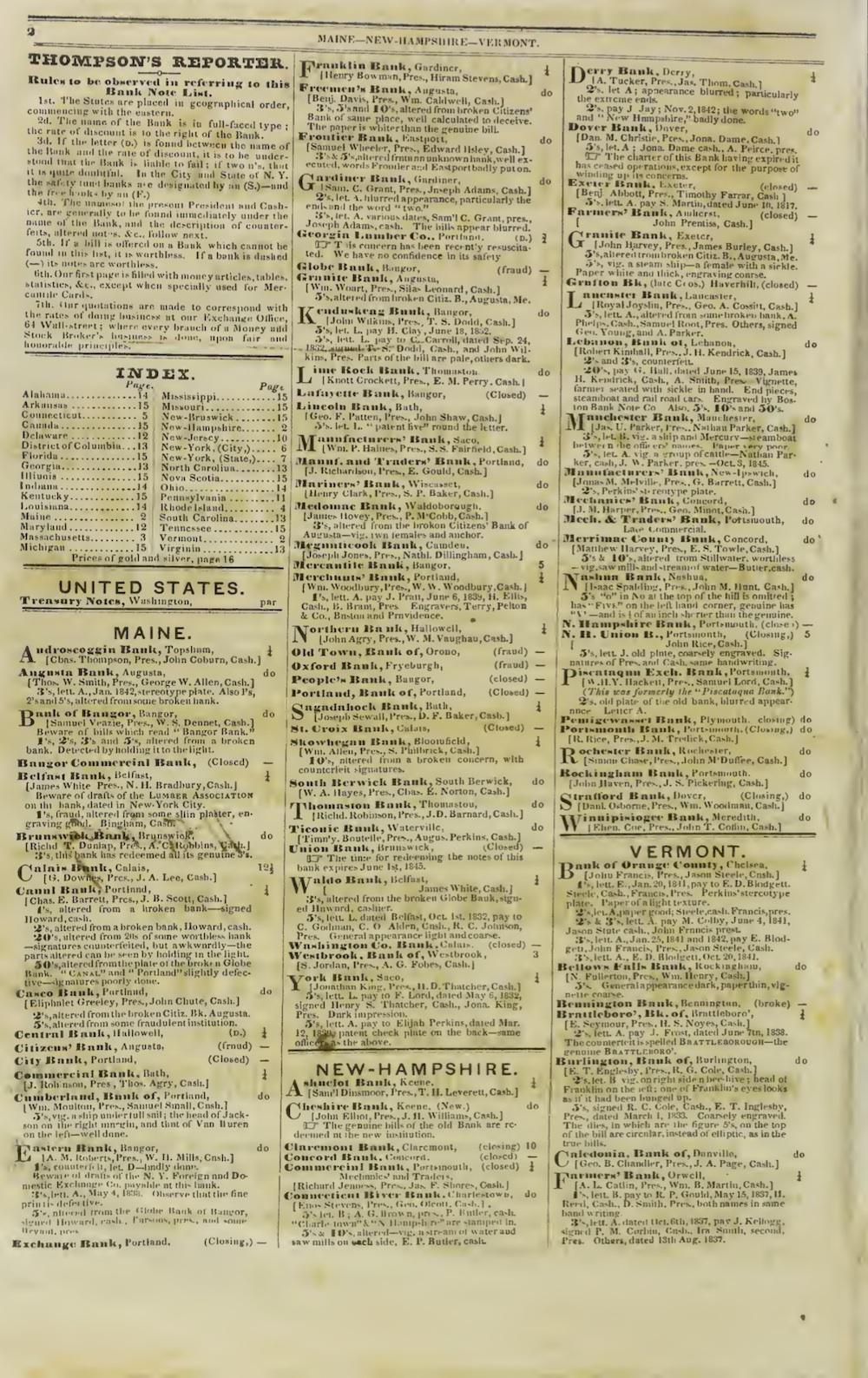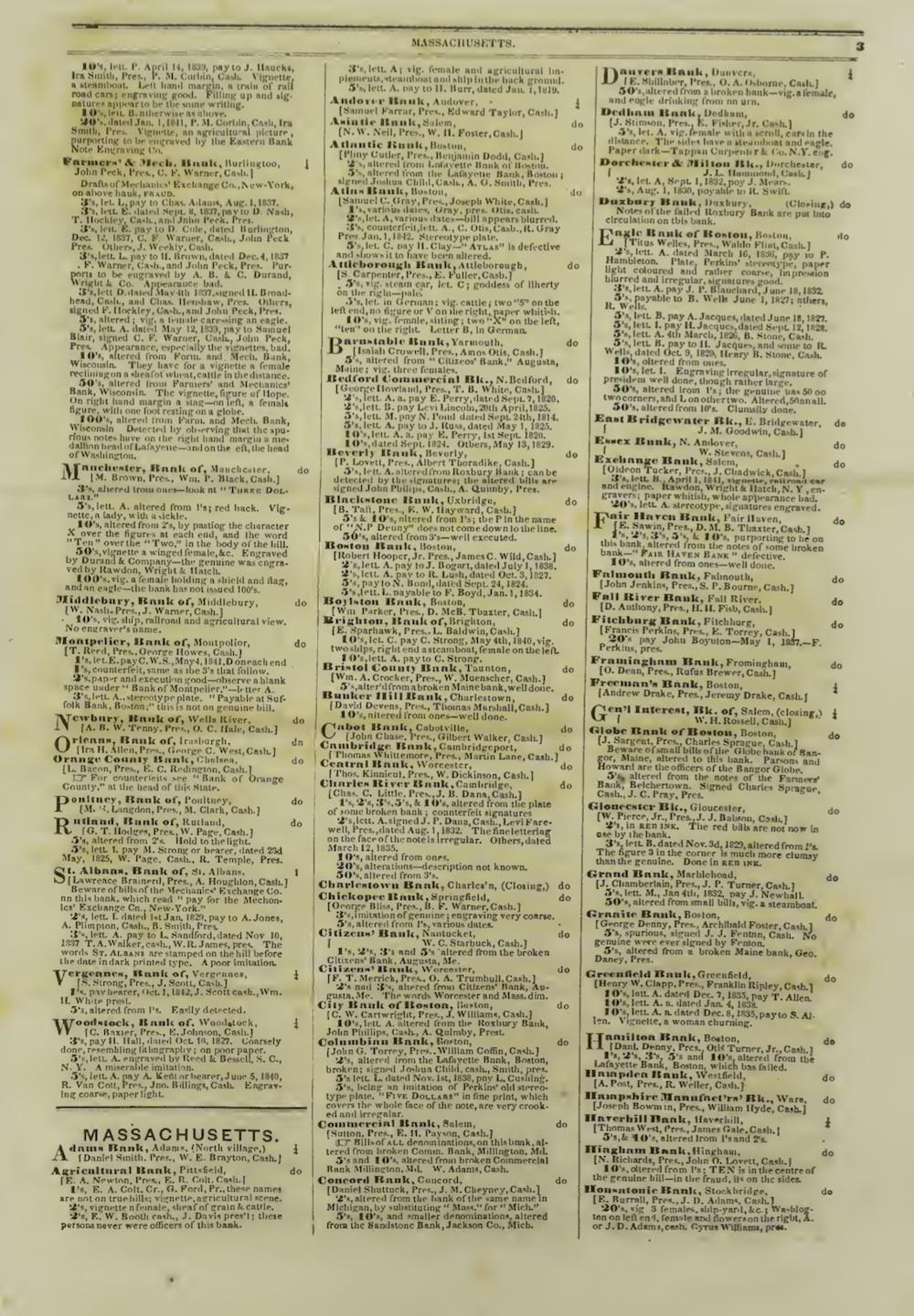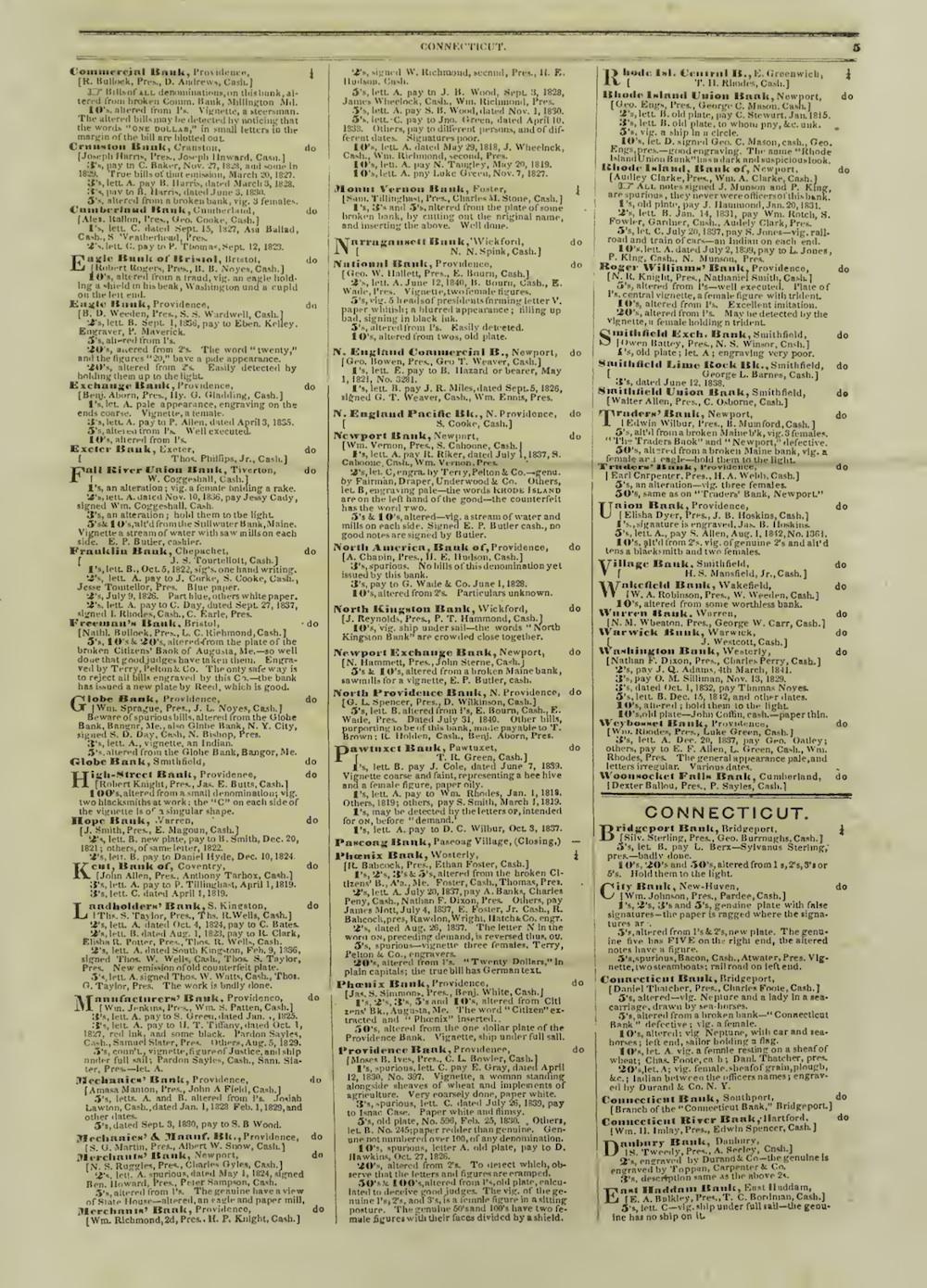Four pages from the publication Thompson’s Bank Note Reporter, issued in February 1846, give a sense of the wide range of currencies available in the United States during the so-called free banking era. (The full 16-page issue, which covers currency from 27 states, D.C., and Canada, is available on the Internet Archive, having been digitized by Washington University Libraries.)
Thompson’s Reporter was one of a class of newspapers that existed solely to catalog and assess types of currency during the period between the decline of the Second Bank of the United States, in 1836, and the emergence of a national currency after the Civil War. As historian Hugh Rockoff writes, “free banking” was one of a few alternative approaches to banking tried during this two-decade period. With free banking, “any potential banker who could raise a certain minimum of capital could start a bank wherever he chose.” The range of notes classified in the Reporter reflects the number of entrepreneurs that stepped into that breach.
Business owners or private citizens could use the Reporter to perform their own assessments of currency, comparing the note in front of them to the Reporter’s visual description of known counterfeits, or to assess whether the Reporter thought the bank was in danger of going under anytime soon. Such precarity was indicated by a straight line in the right-hand column, or a note under the bank’s name; below the entry for Georgia Lumber Company, of Portland, Maine, the Reporter cautioned, “This concern has been recently resuscitated. We have no confidence in its safety.”
Thanks to Mitch Fraas for the tip.

Internet Archive

Internet Archive

Internet Archive

Internet Archive